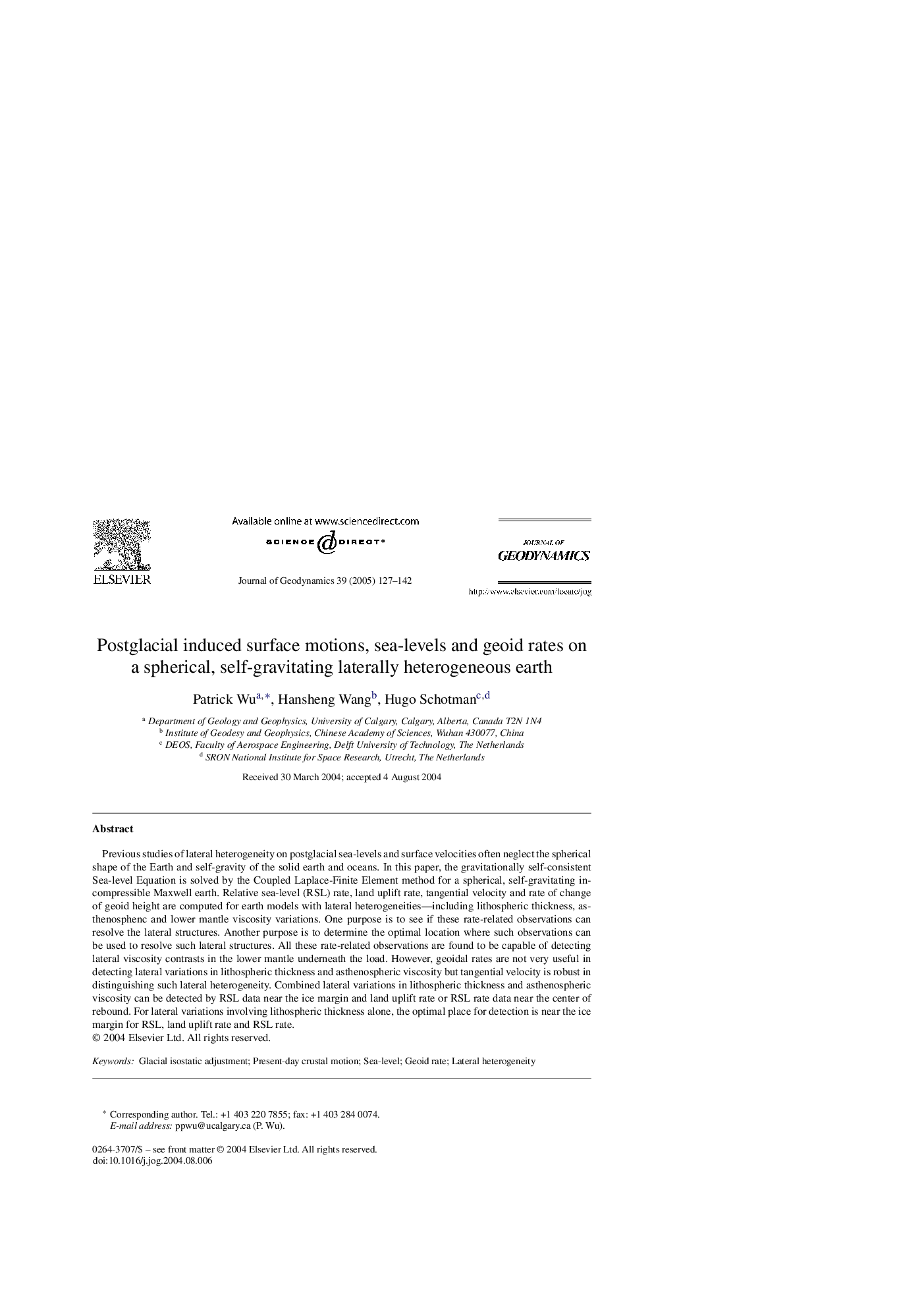| Article ID | Journal | Published Year | Pages | File Type |
|---|---|---|---|---|
| 9525705 | Journal of Geodynamics | 2005 | 16 Pages |
Abstract
Previous studies of lateral heterogeneity on postglacial sea-levels and surface velocities often neglect the spherical shape of the Earth and self-gravity of the solid earth and oceans. In this paper, the gravitationally self-consistent Sea-level Equation is solved by the Coupled Laplace-Finite Element method for a spherical, self-gravitating incompressible Maxwell earth. Relative sea-level (RSL) rate, land uplift rate, tangential velocity and rate of change of geoid height are computed for earth models with lateral heterogeneities-including lithospheric thickness, asthenosphenc and lower mantle viscosity variations. One purpose is to see if these rate-related observations can resolve the lateral structures. Another purpose is to determine the optimal location where such observations can be used to resolve such lateral structures. All these rate-related observations are found to be capable of detecting lateral viscosity contrasts in the lower mantle underneath the load. However, geoidal rates are not very useful in detecting lateral variations in lithospheric thickness and asthenospheric viscosity but tangential velocity is robust in distinguishing such lateral heterogeneity. Combined lateral variations in lithospheric thickness and asthenospheric viscosity can be detected by RSL data near the ice margin and land uplift rate or RSL rate data near the center of rebound. For lateral variations involving lithospheric thickness alone, the optimal place for detection is near the ice margin for RSL, land uplift rate and RSL rate.
Related Topics
Physical Sciences and Engineering
Earth and Planetary Sciences
Earth-Surface Processes
Authors
Patrick Wu, Hansheng Wang, Hugo Schotman,
